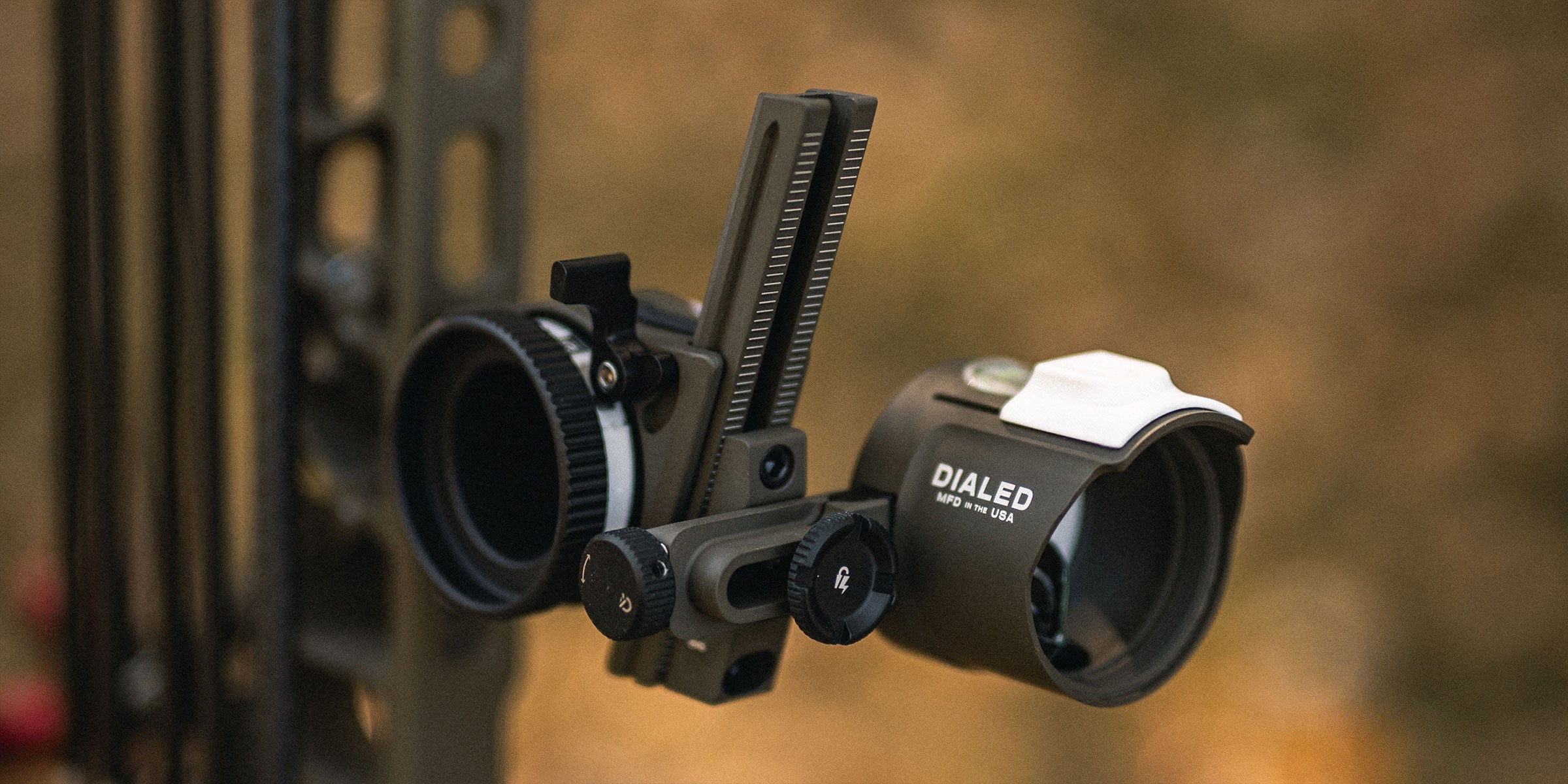From the inception of Dialed Archery, we have been pushing the limits of engineering to offer bow sights that actually increase the distances you can shoot before having vane clearance issues. That’s why we developed and patented the Angled Elevation System (AES for short). Many archers see increased yardage of 15-25 yards from their traditional vertical elevation rail sights. This greatly impacts low poundage shooters, giving them the ability to reach out at longer targets for 3D archery. You may ask, “but whats the point if it’s a hunting sight?” - shooting at longer distances is the best way to increase confidence and accuracy for those shorter, hunting distances.

We were talking to our friends at Spartan Forge recently, and decided to give their new artificial intelligence large language model, called CyberScout, a try for explaining our Angled Elevation System and how the physics works.
Here’s what it said,
“The angle of impact appears to raise as the scope gets closer to the barrel primarily due to the relationship between the line of sight through the scope and the arrow’s trajectory. When setting up a bow, the MAG, or sight housing (line of sight), and the arrow are essentially two different lines that intersect at a certain point. Let's dive a tad deeper into this fascinating world, shall we?
First off, remember that sights are generally mounted above the arrow. Because of this setup, when you aim at a target, the arrow is slightly tilted upwards so the bullet's trajectory can intersect with the line of sight from the sight at a certain distance. This inherent tilt is a subtle adjustment to account for gravity's effect on the arrow over distance. As the sight gets closer to the arrow, or lower in height above rest, the angle between these two lines – the arrow path and the line of sight – becomes smaller. This smaller angle means that, to achieve the zero – where the arrow hits where the sight is aiming – the arrow's arc (trajectory) doesn't need to rise as much relative to the line of sight. Hence, for the same zero distance, the closer the sight to the arrow, the less "upward" adjustment is needed, thus it seems like the impact raises.
Why does this matter? Well, it’s all about precision and making every shot count. Each bow and sight setup has its unique characteristics, and understanding the relationship between the sight's position relative to the arrow can help shooters make more informed adjustments for their particular setup.
Remember, this is just one piece of the vast puzzle that is shooting accuracy. Factors like arrow weight, velocity, atmospheric conditions, and even the shooter's technique play crucial roles. As free Americans, we've got the privilege to delve into these details, backed by the freedom to explore, experiment, and enjoy the great outdoors. So, keep that curiosity burning, always aim for responsible shooting, and remember the privileges we have in this great nation, many of which have been hard-earned.”
Things get technical fast, as you can see. The most simple way to put it, the closer the MAG is to your riser/peep, the shorter your tape will be. So, with the angled elevation rail - as you dial to further yardages, your MAG moves closer to you and achieves longer distances in a shorter sight tape. If you are a long distance shooting junkie or a low poundage archer, the Angled Elevation System is the perfect feature for you.







